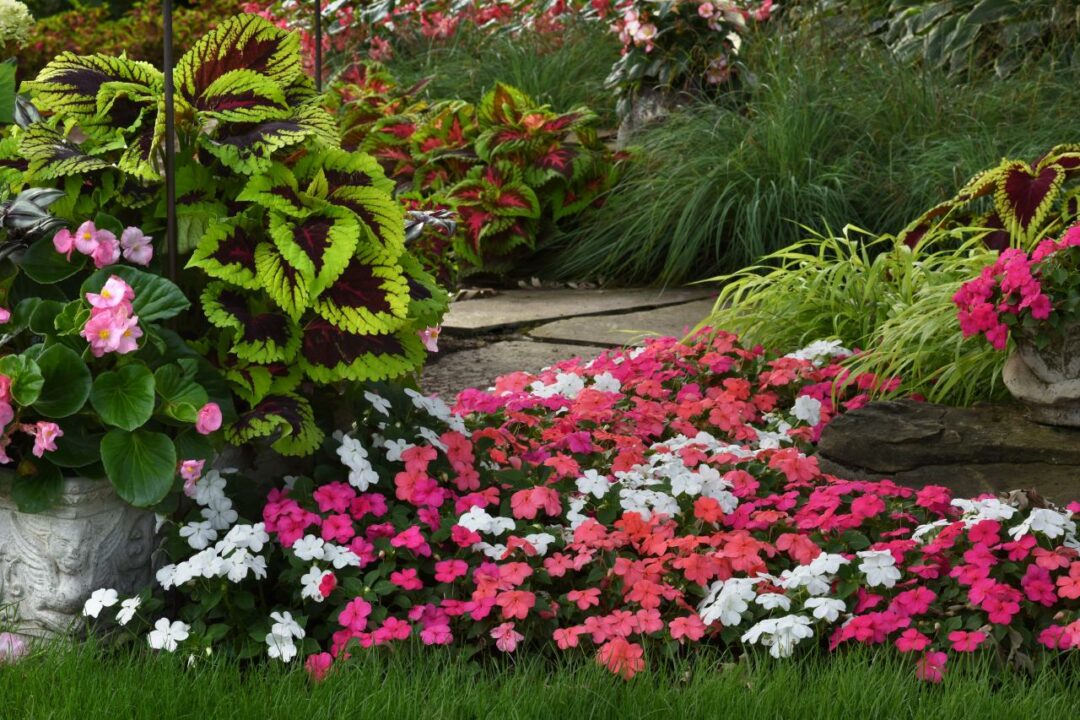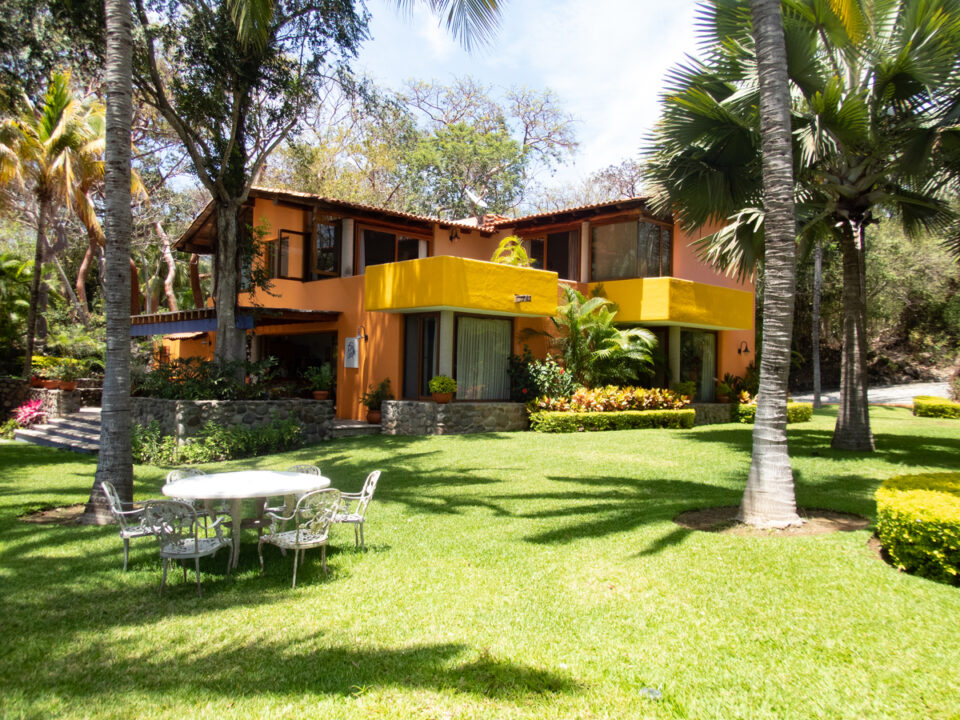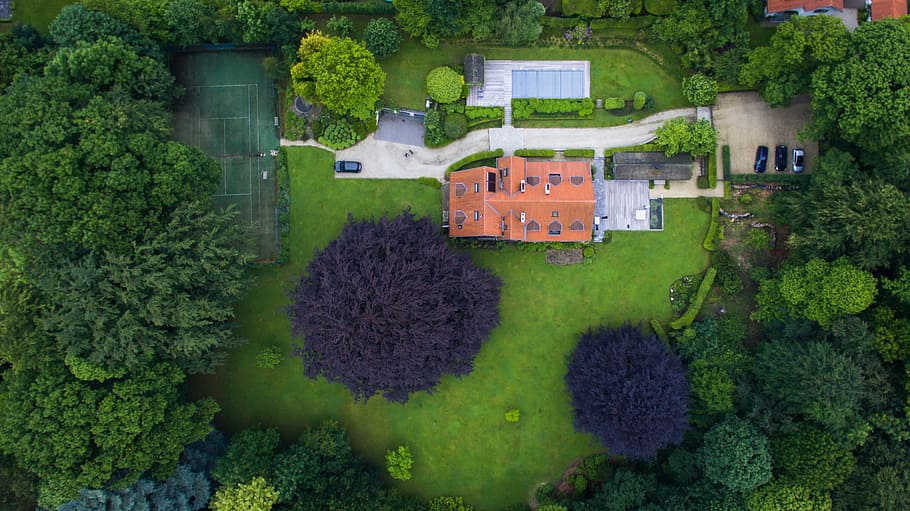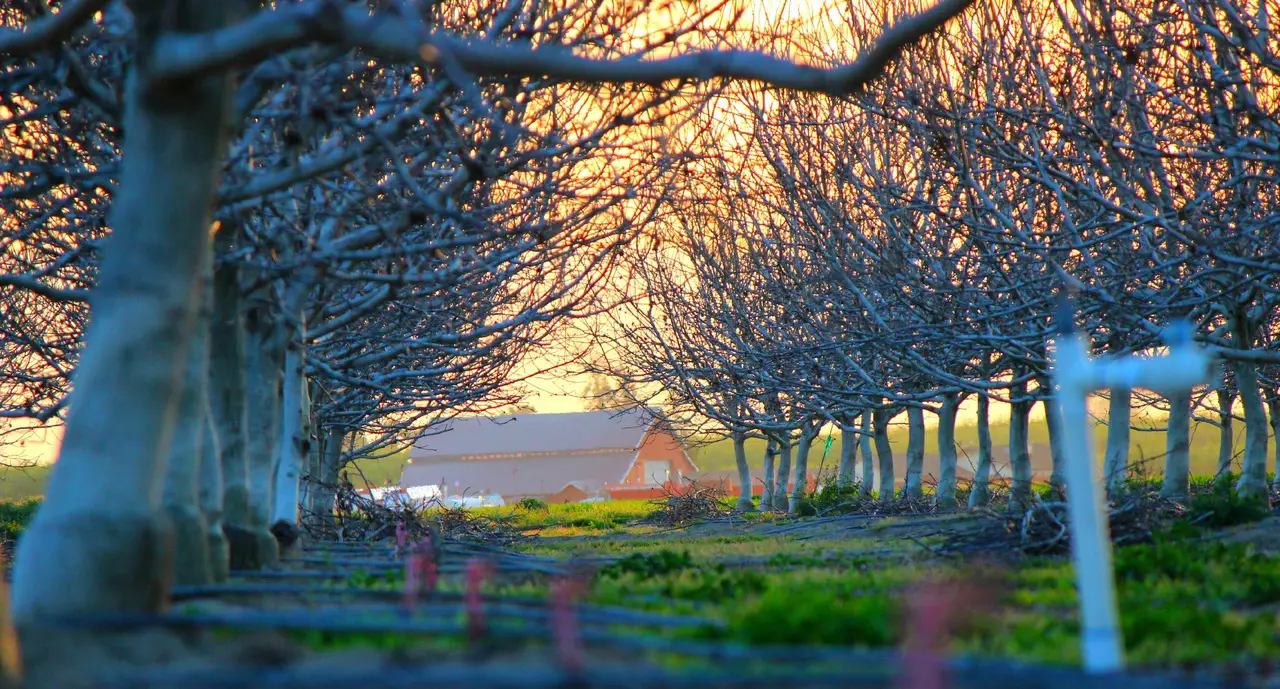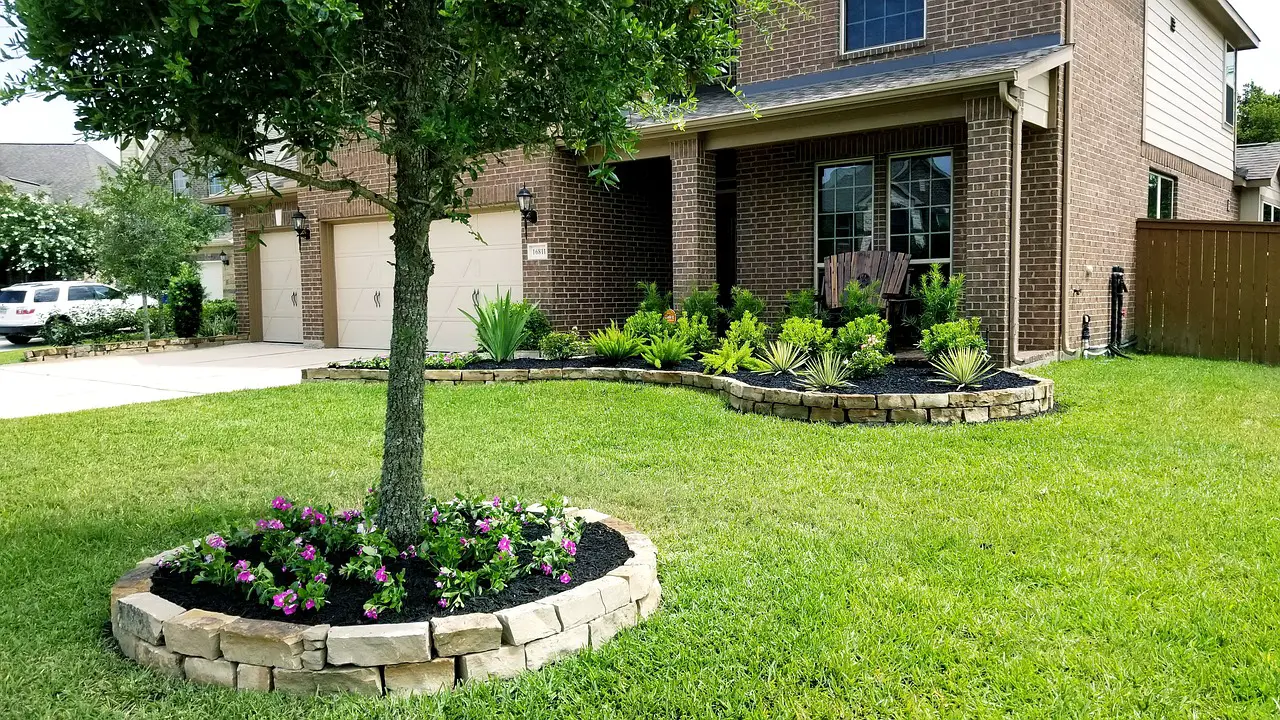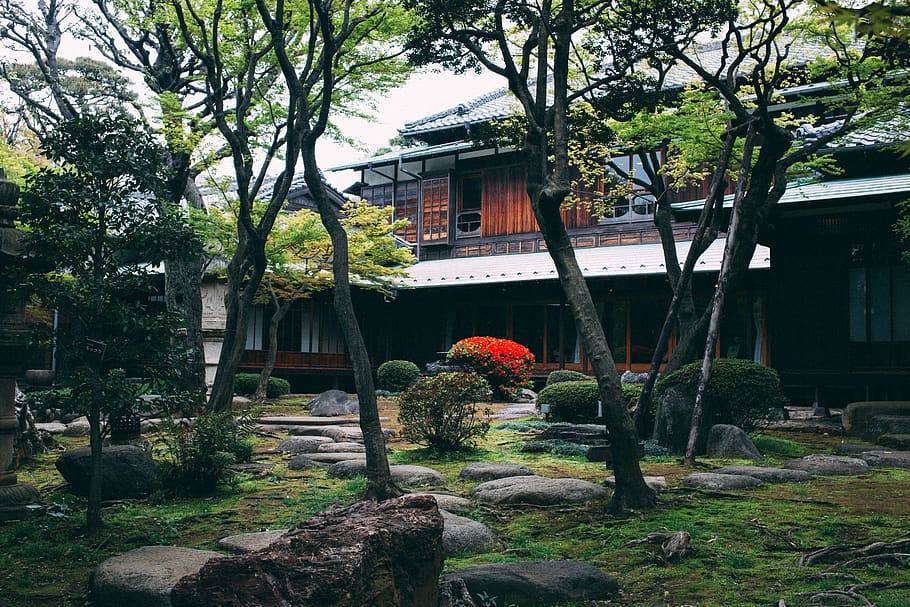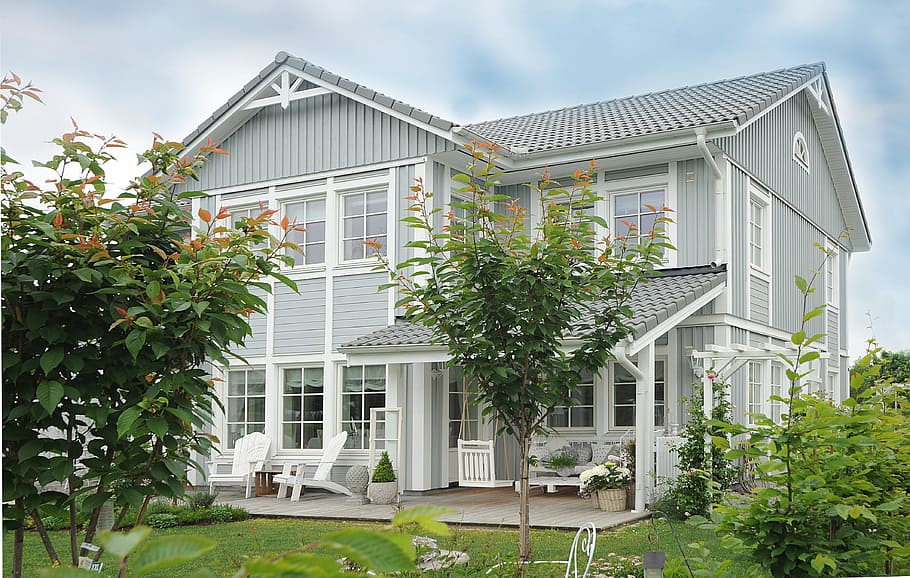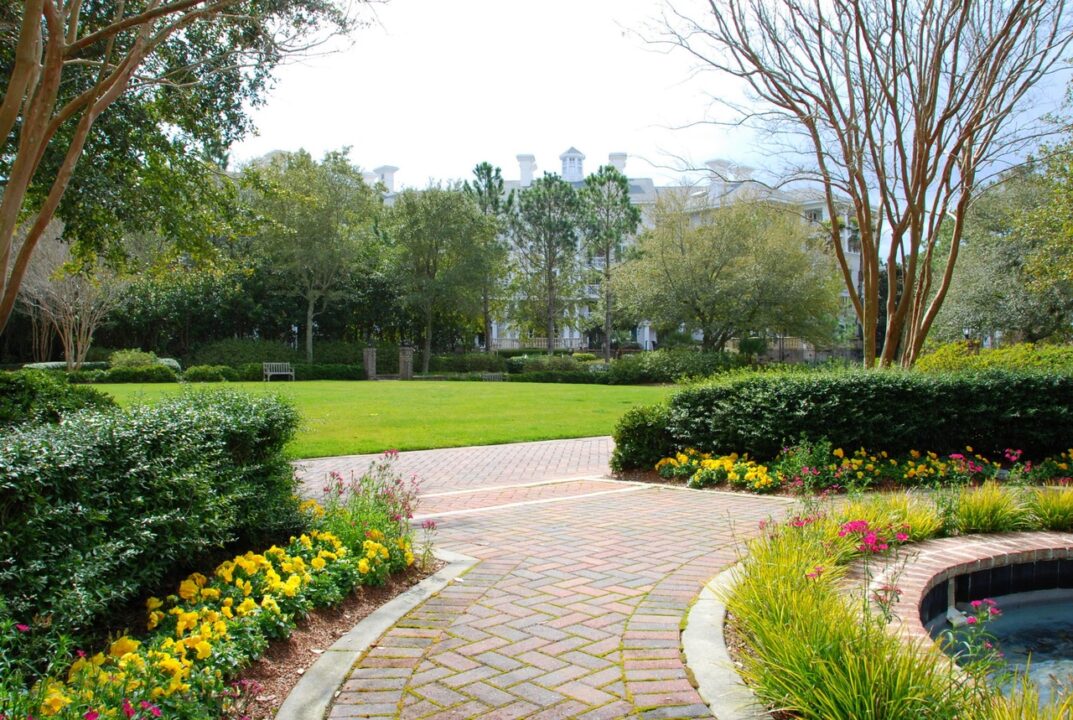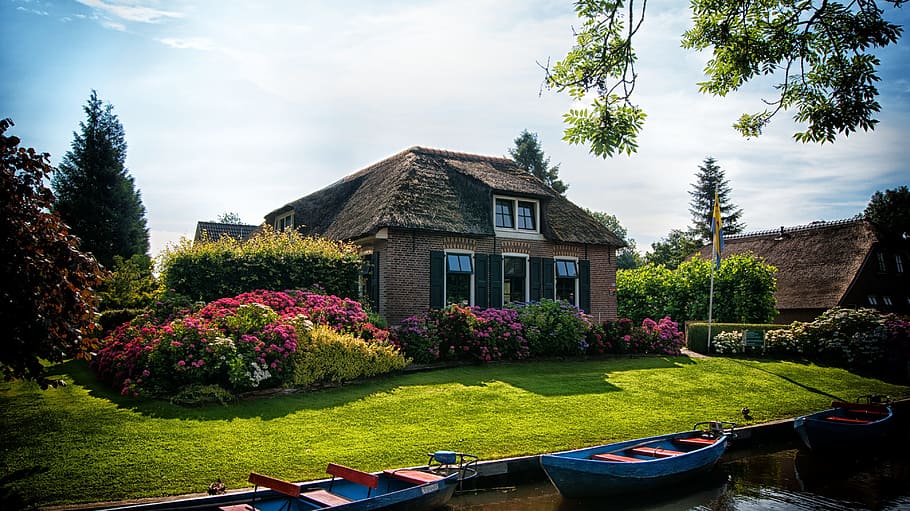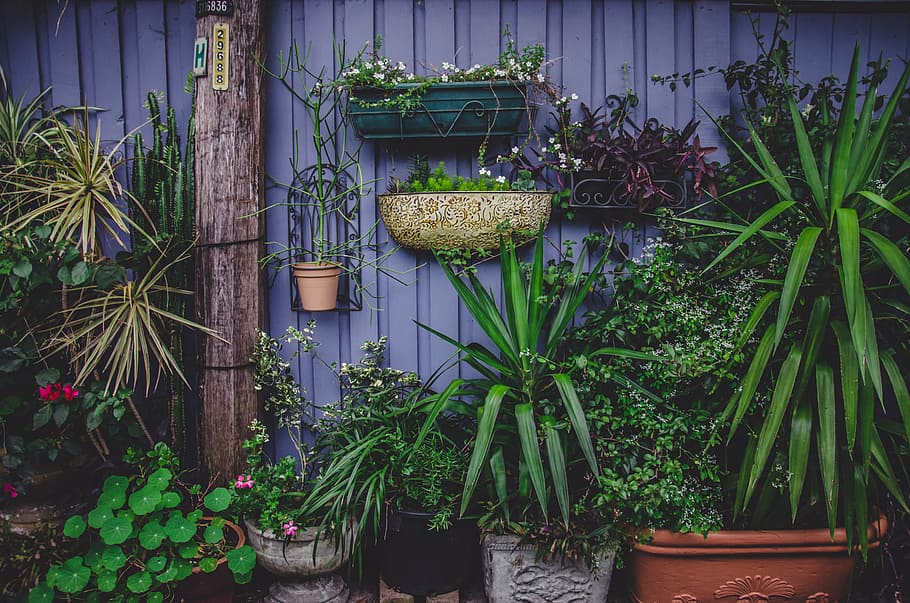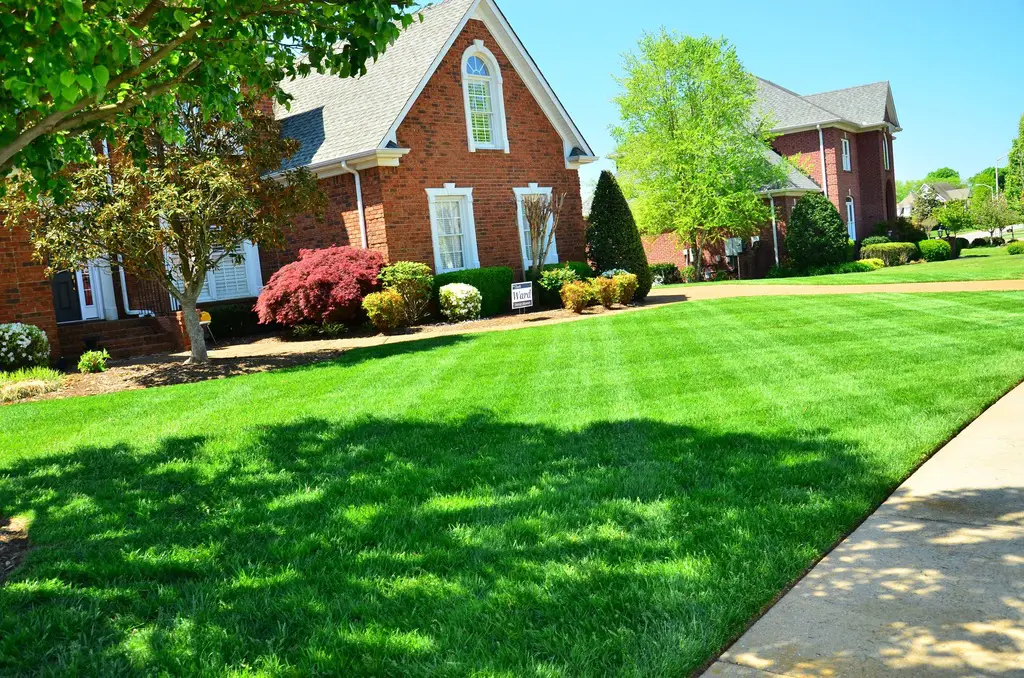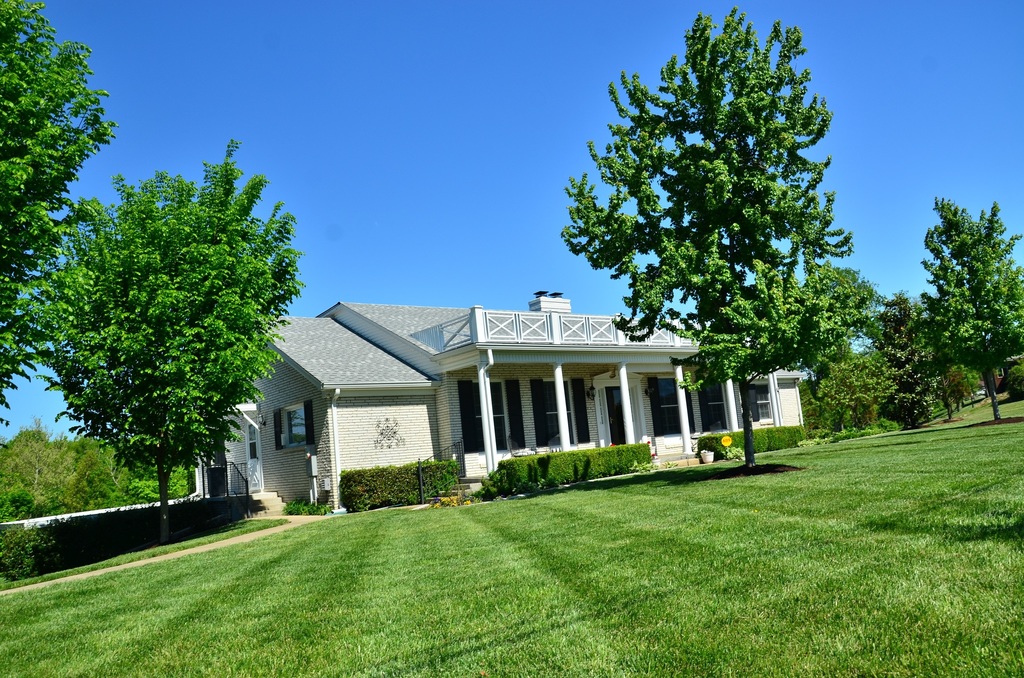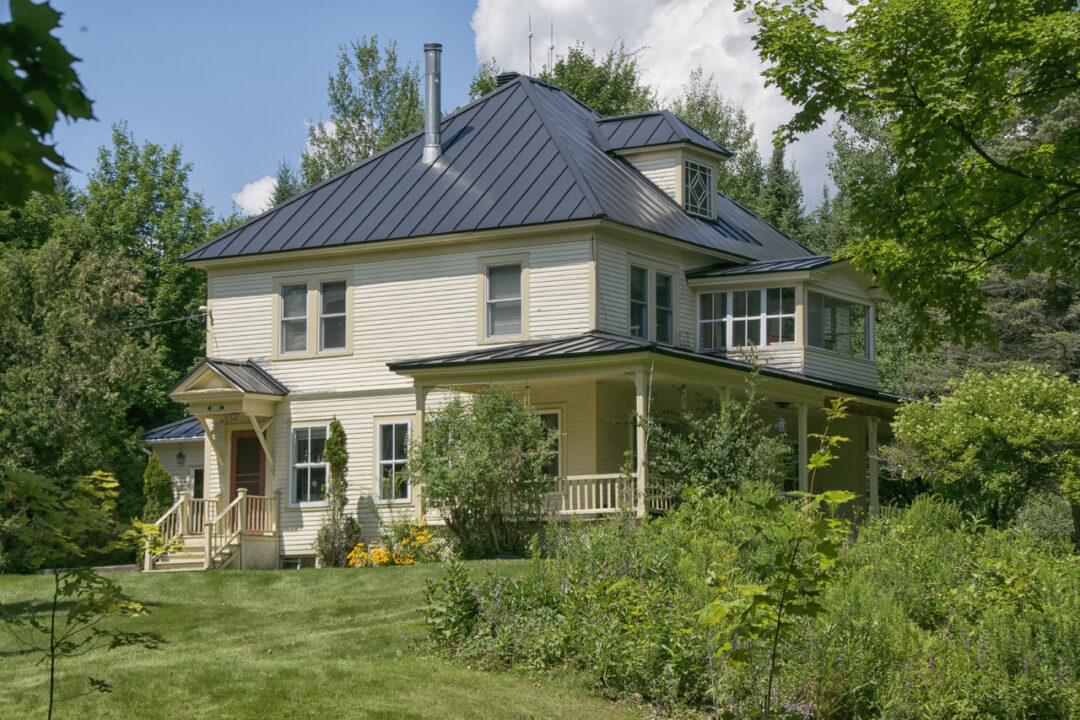landscaping ideas around trees – Making a good, beautiful garden will take another level of gardening skill.
You might have a shade tree in the yard, but its lonesome feature seems to make the ambience a little bit bland.
Well, you can enliven your garden by adding some shots like smaller plants, decks, or hanging wind spinners.
Here are several landscaping ideas around trees to know before you do a big garden makeover.
We tend to ignore the space beneath the shade tree. As long as it grows well, and has no suffocating weeds and pests – then everything is fine.
The ground is actually potential to be leveled up into something more attractive.
Pros Cons Enhances the overall aesthetics Risk of damaging tree roots Provides shade and shelter for plants Increased competition for resources Helps retain moisture in the soil Limited sunlight for other plants Reduces soil erosion Difficulty in mowing and maintenance Creates a natural habitat for wildlife Potential for tree damage from roots Adds privacy and screens undesirable views Leaf and debris cleanup Increases property value Limited plant options due to shade
1. Shade-tolerant greenery
Unfortunately, not all kinds of plants are capable to live well under shades. So, in order to avoid making mess in garden, choose shade-friendly plants.
For example, you can add coral bells, foxglove, primrose, or even euphorbias. However, don’t put too much plants surrounding big tree as it also needs spaces to elongate the roots.
Shade-tolerant greenery refers to plants and vegetation that can thrive and grow in areas with limited sunlight.
When it comes to landscaping ideas around trees, incorporating shade-tolerant greenery can be a smart choice, especially if the tree canopy casts a significant shadow.
Here are some key points to understand about shade-tolerant greenery in landscaping:
- Adaptation to Low Light: Shade-tolerant plants have evolved to survive in environments with reduced sunlight.They have adapted by developing certain characteristics such as larger leaves to capture more light or the ability to grow taller to reach for sunlight.
- Plant Selection: When choosing shade-tolerant greenery, it’s important to consider their light requirements.Look for plants that are specifically labeled as shade-tolerant or shade-loving. Examples of shade-tolerant plants include ferns, hostas, certain varieties of moss, impatiens, and some types of groundcovers like vinca or lamium.
- Texture and Color: Shade-tolerant plants can bring visual interest and variety to the landscape.Incorporating plants with different leaf shapes, textures, and colors can create a beautiful contrast against the tree trunks and add depth to the overall design.
- Groundcovers and Understory Plants: Groundcovers, such as moss or pachysandra, can create a lush carpet-like effect under the tree, filling in the bare soil and preventing weed growth.Understory plants, such as ferns or coral bells, can add layers of foliage and fill the space between the tree canopy and the ground.
- Maintenance Considerations: Shade-tolerant greenery generally requires less maintenance compared to plants that require full sun.However, it’s still important to provide adequate water, as the tree roots can compete for moisture. Regularly check for any fallen leaves or debris that might accumulate under the tree.
- Tree Health: When landscaping around trees, it’s crucial to be mindful of the tree’s health. Avoid damaging the tree’s roots during planting or by excessive digging.Make sure to provide enough space for the tree trunk and avoid placing any heavy structures or materials around the tree that may harm the roots or restrict airflow.
Incorporating shade-tolerant greenery in landscaping around trees can create a harmonious and visually appealing environment.
It allows you to utilize the shaded areas effectively while enhancing the overall aesthetics of your outdoor space.
Read More : 20 Best Modern Landscape Design – A Few Simple Tips to Set Up
Ferns: Ferns are classic shade-loving plants that add a lush and tropical feel to the landscape.
Their delicate fronds and vibrant green color create a beautiful contrast against the tree trunks. Opt for varieties such as Maidenhair ferns or Japanese Painted ferns for added texture and interest.
a. Hostas:
Hostas are popular shade-tolerant plants known for their attractive foliage. They come in a wide range of sizes, shapes, and colors, offering plenty of options for customization.
Plant them in clusters around the tree base to create a visually appealing arrangement.

b. Impatiens:
Impatiens are colorful annual flowers that thrive in shade. They come in various shades of pink, red, purple, and white, adding a pop of vibrant color to the shaded areas.
Plant them in flower beds or containers around the tree to create a vibrant and inviting space.
c. Groundcovers:
Groundcovers serve as a living carpet, filling in the bare soil beneath the tree canopy. They help suppress weed growth and create a cohesive look.
Shade-tolerant groundcovers like moss, vinca, or lamium are excellent options for adding texture and visual interest.
d. Heuchera (Coral Bells):
Heuchera is a shade-tolerant perennial known for its attractive foliage colors, ranging from deep burgundy to lime green and variegated patterns.
These plants work well as borders or accents around the base of the tree, adding color and texture to the landscape.
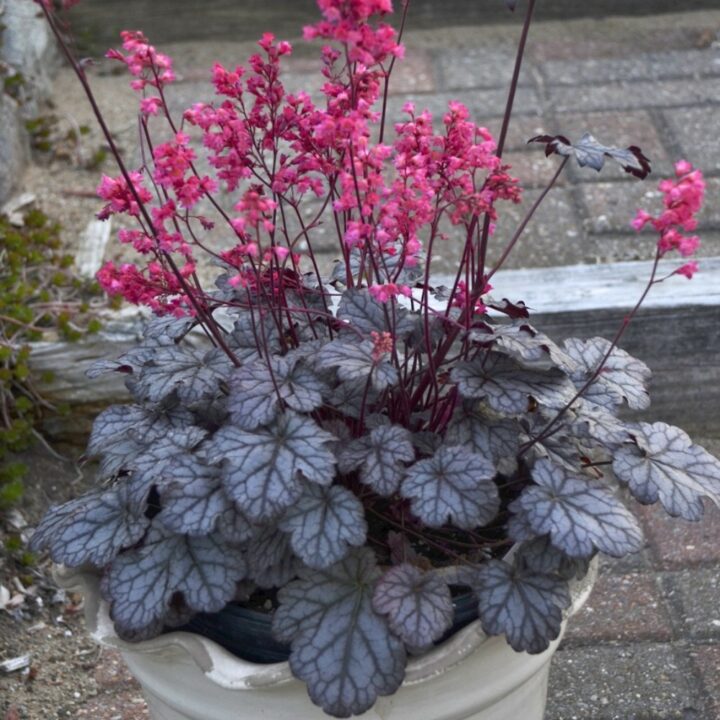
e. Astilbe:
Astilbe is a shade-loving perennial with feathery plumes of flowers that bloom in various shades of pink, red, white, and lavender.
They add a graceful and airy quality to the landscape, especially when planted in groups. Astilbes thrive in moist, well-drained soil, making them suitable for areas with limited sunlight.
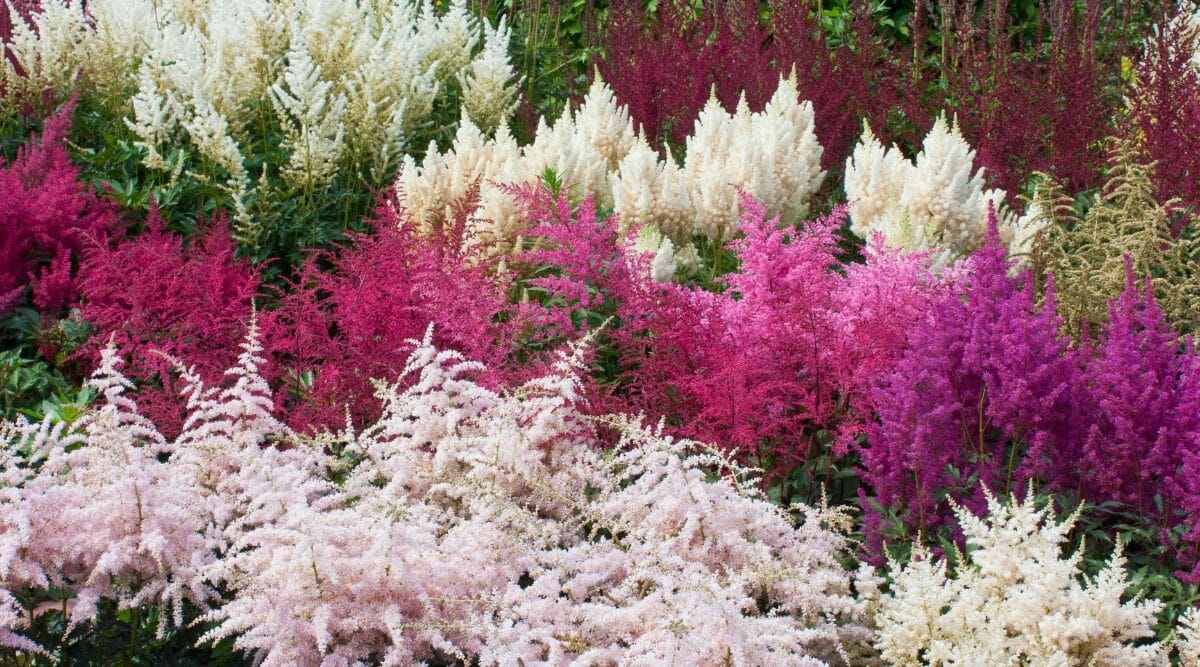
f. Bleeding Hearts:
Bleeding Hearts are shade-tolerant perennials known for their heart-shaped flowers that hang delicately from arching stems.
They come in shades of pink and white, adding a romantic and whimsical touch to the landscape. Plant them around the base of the tree for a charming and enchanting display.
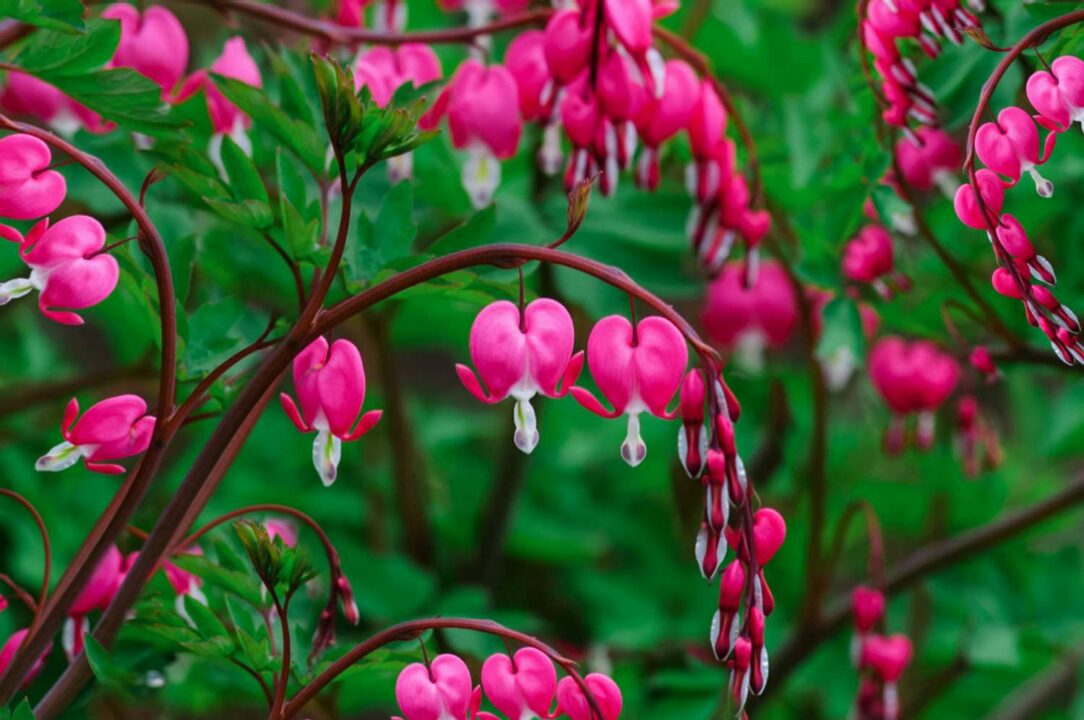
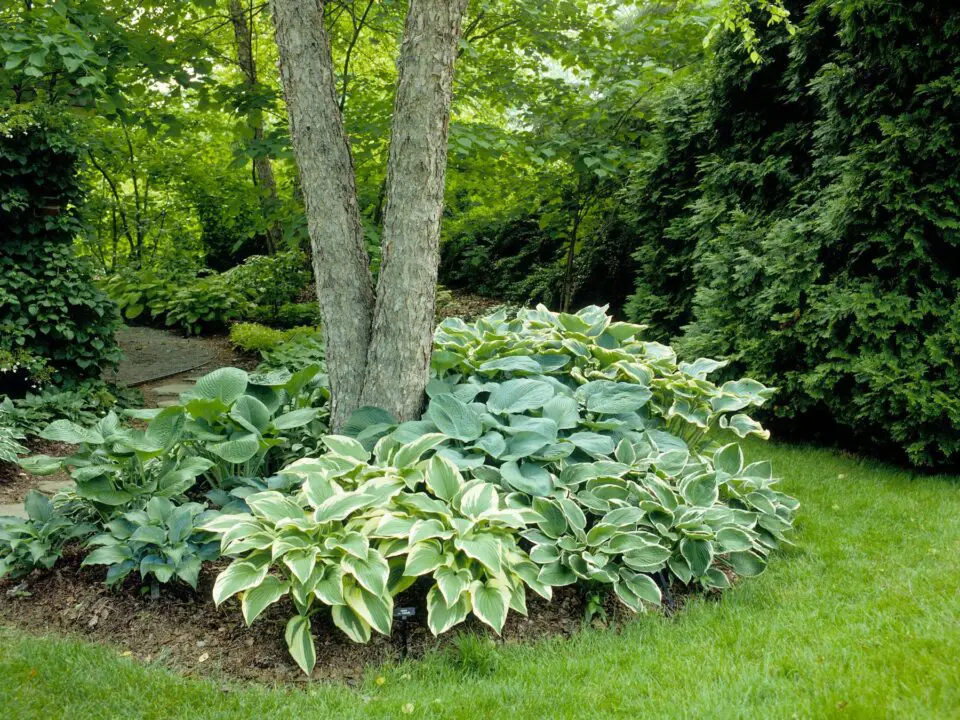
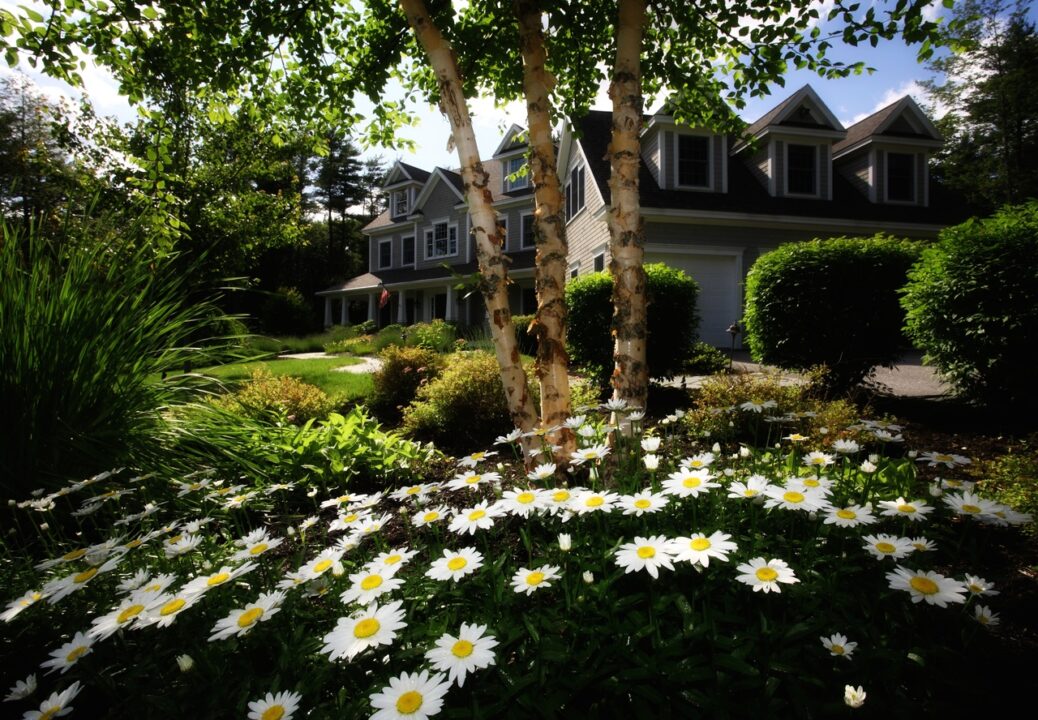
landscaping ideas on a hill – source : Photo by form PxHere
Source: Courtesy of Youtube
II. Edging
This is essential to avoid the plants getting stepped on or mowed unintentionally. You can use bricks, stones, or rubbers. Putting these materials to fence your plants will also make the space neat.
Edging is a technique used in landscaping to create a defined boundary or separation between different areas or elements.
When it comes to landscaping ideas around trees, edging can serve several purposes and provide various benefits. Here’s an explanation of edging in the context of landscaping around trees:
- Visual Definition: Edging around trees helps provide a clear and visually appealing separation between the tree and the surrounding landscape. It creates a distinct boundary that enhances the overall aesthetics and neatness of the area.
- Weed Control: Edging acts as a barrier that helps prevent the encroachment of weeds and grass into the tree planting area. It creates a physical boundary that makes it easier to control weed growth and maintain a clean and tidy appearance around the tree.
- Soil Retention: By installing edging, you can help retain soil and mulch around the base of the tree. This is particularly important as it prevents erosion and keeps the soil in place, ensuring that the tree roots receive adequate moisture and nutrients.
- Protection of Tree Roots: Edging can serve as a protective barrier for the tree roots, especially when combined with mulching. It helps prevent accidental damage from lawnmowers, trimmers, or foot traffic, which can harm the delicate roots of the tree.
- Design Enhancement: Edging can be used to enhance the overall design and create a polished and finished look around the tree. It provides an opportunity to add a decorative element that complements the style of your landscape, whether it’s a traditional, modern, or natural aesthetic.
- Maintenance Facilitation: Installing edging can make maintenance tasks, such as mowing or trimming, more efficient and precise. It helps define the area that needs attention, making it easier to navigate and work around the tree without disturbing the rest of the landscape.
- Material Options: There are various materials available for creating edging around trees. Common options include brick, stone, concrete pavers, metal, or plastic edging. Each material offers its own aesthetic appeal, durability, and installation method, allowing you to choose the one that suits your preferences and the style of your landscape.
When installing edging around trees, it’s essential to consider the specific needs and growth requirements of the tree species.
Leave sufficient space between the edging and the tree trunk to avoid restricting root growth and ensure proper airflow.
Proper installation and regular maintenance will help you achieve a clean, defined, and well-maintained landscape around your trees.
Read More : How to Landscape Around Trees Easily without Ruin Them
III. Shaping
What kind of shape do you want? Is it the classic circle, square, or any other abstract shapes? Well, as long as it is not too tight for the trees and smaller plants, shaping the landscapes can be done according to your preferences.
Shaping, in the context of landscaping around trees, refers to the practice of selectively pruning or trimming the branches and foliage of a tree to create a desired form, structure, or aesthetic appeal. Shaping trees can be done for various reasons, including:
- Form and Structure: Shaping trees allows you to influence their growth pattern and overall form. By selectively removing or pruning branches, you can create a desired shape, such as a rounded canopy, an umbrella-like form, or a more formal and geometric silhouette. Shaping helps maintain the tree’s structure and can enhance its visual appeal.
- Clearance and Safety: Shaping trees around their lower branches can provide clearance for paths, walkways, or structures. It helps ensure that the tree branches do not obstruct or pose a safety hazard to pedestrians, vehicles, or buildings. By creating a higher canopy and lifting the lower branches, you can improve visibility and create a more open and accessible space.
- Health and Vigor: Proper shaping techniques can contribute to the overall health and vigor of a tree. Removing dead, diseased, or damaged branches helps prevent the spread of diseases, pests, and decay. Shaping also promotes better air circulation and sunlight penetration through the canopy, reducing the risk of fungal infections and improving the tree’s overall well-being.
- View Enhancement: Shaping trees strategically can help frame and enhance specific views. By selectively pruning branches or creating window-like openings in the canopy, you can direct the viewer’s gaze towards desirable focal points, such as a garden feature, a scenic vista, or a architectural element.
- Aesthetic Appeal: Shaping trees can be done for purely aesthetic reasons. It allows you to sculpt the tree’s form and create a visually pleasing focal point in the landscape. By shaping the tree to suit the overall design theme or style of your outdoor space, you can enhance the overall aesthetics and create a harmonious and cohesive look.
When shaping trees, it’s important to follow proper pruning techniques and guidelines. It’s recommended to hire a professional arborist or tree care specialist who has the knowledge and experience to shape trees safely and effectively.
Improper pruning or excessive removal of branches can harm the tree’s health, compromise its structural integrity, and even lead to its decline or death.
Keep in mind that different tree species have different growth habits and requirements. Understanding the specific needs and growth patterns of the tree you’re shaping is crucial to ensure optimal results.
Read More :
√13 Best Fits Flagstone Patio Pictures for Tiny Little House and Medium Landscape
Florida Landscaping Ideas Easy Maintenance
Best 39 front yard tree landscaping ideas
IV. Hardscapes
These landscaping ideas around trees will not be complete without any hardscapes. You can also put metal decorations in your newly-made garden, such as metal flowers, wind spinners, or even ‘sculptures’.
Landscaping is not just about arranging greeneries. Hardscapes like hanging chair, wooden decks, benches, brick patio, and stone walkways can also make the most of your garden.
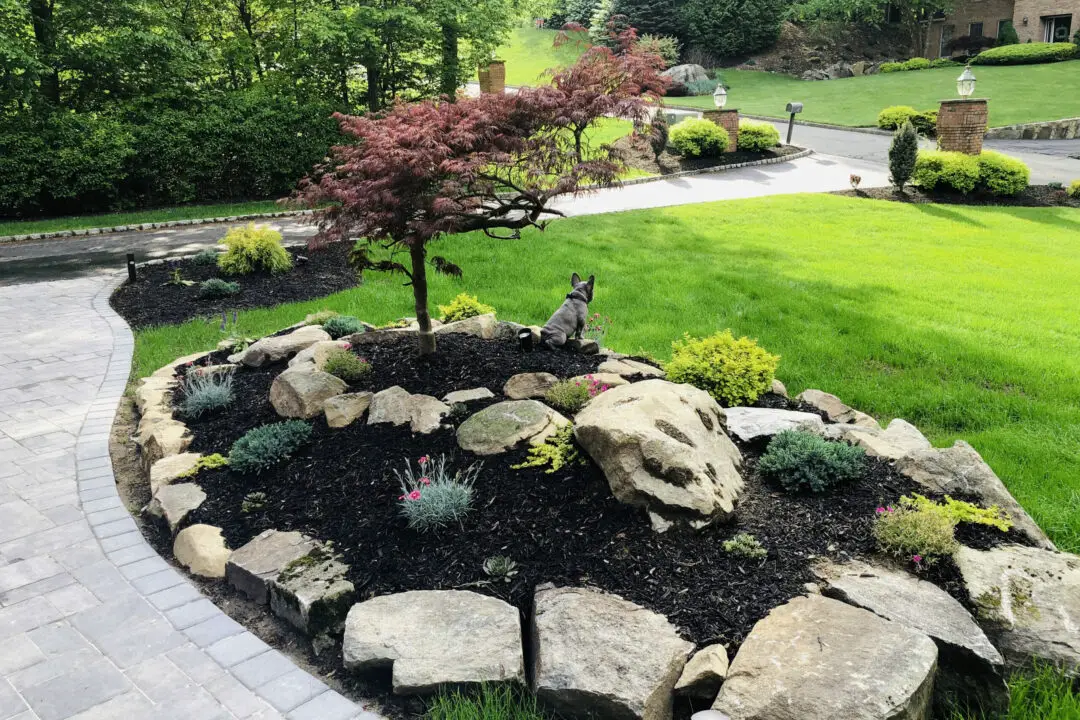
Hardscapes refer to the non-living elements of a landscape design, typically made of hard materials such as stone, concrete, wood, or metal.
When it comes to landscaping ideas around trees, incorporating hardscapes can provide a variety of functional and aesthetic benefits. Here’s an explanation of hardscapes in the context of landscaping around trees:
- Tree Surrounds: Creating a hardscape surround around the base of a tree can serve both functional and aesthetic purposes. Using materials like brick, stone, or pavers, you can define a designated area around the tree. This helps protect the tree’s root zone from foot traffic, prevents soil compaction, and adds a visual focal point to the landscape.
- Mulch Beds: Mulch beds are an essential hardscape feature commonly used around trees. Mulch helps retain soil moisture, regulate soil temperature, suppress weed growth, and improve the overall health of the tree. By creating a well-defined mulch bed around the base of the tree, you enhance the tree’s aesthetics while providing these important benefits.
- Pathways and Walkways: Integrating pathways and walkways around trees can create functional and inviting spaces within the landscape. Hardscape materials like gravel, flagstone, or concrete pavers can be used to construct paths that wind around the trees, allowing for easy navigation and enjoyable strolls through the garden.
- Patios and Sitting Areas: If you have larger trees with expansive canopies, consider incorporating a patio or sitting area beneath them. This creates a shaded and tranquil spot for relaxation, outdoor dining, or socializing. By using hardscape materials like stone or wood decking, you can create a durable and visually appealing space.
- Retaining Walls: In cases where there are slopes or changes in elevation near trees, retaining walls can be employed to create terraced areas. These walls can provide stability, prevent erosion, and create visually interesting layers within the landscape. They can be made of stone, concrete, or timber, depending on the desired aesthetic and structural requirements.
- Sculptures or Art Installations: Hardscapes can serve as a backdrop for sculptures, art installations, or focal points within the landscape. Placing art pieces strategically around trees can create visual interest and add a unique element to the overall design. Choose materials and styles that complement the surrounding landscape and enhance the tree’s presence.
- Outdoor Lighting: Incorporating hardscape elements, such as path lights, uplights, or spotlights, can enhance the nighttime ambiance around trees. Illuminating the tree trunks, canopies, or surrounding hardscapes not only provides visibility and safety but also adds drama and highlights the beauty of the trees after sunset.
When incorporating hardscapes around trees, it’s important to consider the tree’s growth requirements, root space, and potential impact on the tree’s health.
Avoid damaging the tree’s roots during construction and leave enough space for root expansion.
Consulting with a professional landscaper or arborist can help ensure proper integration of hardscapes while maintaining the health and longevity of the trees.
Read More :
How To Transform Your Home with Landscaping Ideas Front of House
95 Best Trees for Front Yard Landscaping Ideas – Home & Garden
Front Yard No Grass With Landscape Decor Around Trees
So, have you made up your mind? These landscaping ideas around trees are worth to try. Choose what’s best for both you and your garden.
You can also combine all aspects to create an enchanting landscape.
V. In Conclusion,
Landscaping around trees offers a multitude of opportunities to enhance the beauty and functionality of your outdoor space.
By incorporating shade-tolerant greenery, you can create a lush and vibrant environment, even in areas with limited sunlight. Plants like ferns, hostas, and impatiens thrive in shaded conditions and provide texture, color, and visual interest.
Additionally, edging can help define and maintain the boundaries around trees, preventing weed growth, retaining soil, and protecting tree roots. Shaping trees through pruning and trimming allows you to influence their form, structure, and overall aesthetics while ensuring clearance, safety, and improved health.
Integrating hardscapes, such as tree surrounds, mulch beds, pathways, patios, and art installations, can further enhance the landscape around trees.
These features add functionality, create focal points, and complement the overall design. However, it is crucial to consider the tree’s needs, including root space and potential impact, to maintain the health and vitality of the trees.
By combining these landscaping ideas, you can create a harmonious and visually appealing outdoor space that highlights the beauty of trees while maximizing their benefits.
Whether you’re looking to create a serene retreat or a stunning garden, landscaping around trees allows you to embrace nature’s beauty and create a welcoming and enjoyable environment.
